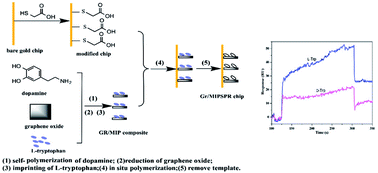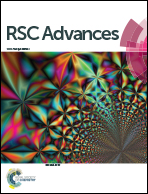A novel surface plasmon resonance sensor based on a functionalized graphene oxide/molecular-imprinted polymer composite for chiral recognition of l-tryptophan
Abstract
Herein, a novel surface plasmon resonance (SPR) sensor based on a functionalized graphene oxide (GO)/molecular-imprinted polymer composite was developed for the chiral recognition of L-tryptophan (L-Trp). The composite's recognition element was prepared via a facile and green synthesis approach using polydopamine as both a reducer of GO and a functional monomer as well as a cross-linker for molecular imprinting. The composite was characterized via Fourier transform infrared spectroscopy, scanning electron microscopy, X-ray diffraction, and Raman spectroscopy. After attaching the composite onto the gold surface of an SPR chip, the sensor was characterized using contact-angle measurements. The sensor exhibited excellent selectivity and chiral recognition for the template (i.e., L-Trp). Density functional theory computations showed that the difference in hydrogen bonding between the composite element and L-Trp and D-Trp played an important role in chiral recognition.



 Please wait while we load your content...
Please wait while we load your content...